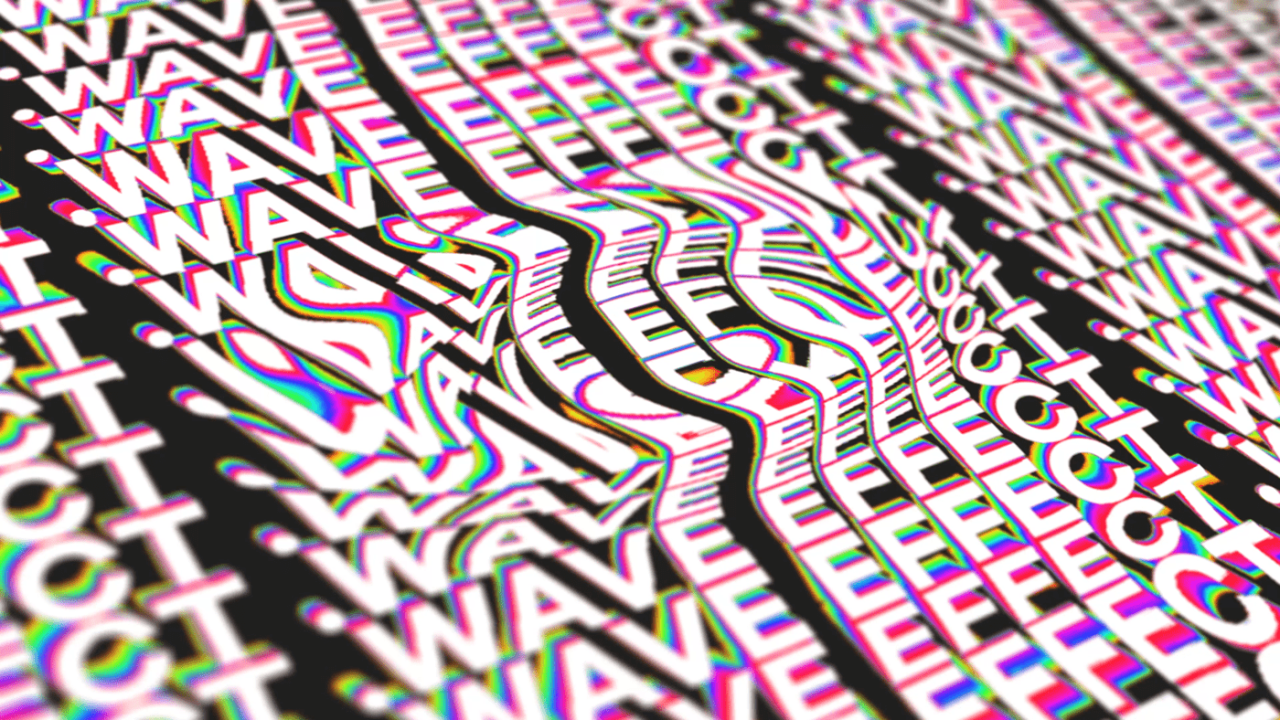In a world saturated with static text on screens, a dynamic and powerful art form is emerging to capture our attention and tell a story in a new and compelling way. Kinetic typography, the art of moving text, is far more than just animated words on a screen. It is a sophisticated discipline that blends the principles of graphic design, motion graphics, and typography to create a visual and emotional experience. This is not a new concept; the earliest forms of kinetic typography can be traced back to silent films and title sequences. But the advent of new technology, from powerful design software to high-resolution displays, has pushed this art form to a new frontier. This comprehensive article delves into the profound impact of kinetic typography, exploring the foundational principles that make it so effective, the diverse applications that are already reshaping our world, and the immense opportunities and critical challenges that lie ahead as we embrace a new, more dynamic, and more expressive form of communication.
For centuries, the written word has been a fixed, unchanging object. A letter, once printed on a page, was a static representation of a sound or an idea. The advent of digital technology liberated the word from its static form, giving it the power to move, to grow, to shrink, and to dance on a screen. What was once a simple sentence could now become a visual and an emotional experience. A word could appear on the screen with a powerful, confident motion, conveying a sense of authority. A sentence could slowly and deliberately unfurl, conveying a sense of mystery and suspense. This is not just about making text look cool; it is about using motion to enhance a message, to add a new layer of meaning, and to create a deeper and more emotional connection with an audience.
The global interest in kinetic typography is skyrocketing, with a new generation of designers and animators embracing it as a powerful tool for storytelling. The principles of kinetic typography are being applied to a wide range of fields, from film and television to advertising and corporate presentations. The applications are as diverse as they are profound. This is more than a design trend; it is a profound philosophical shift, where we are beginning to redefine our relationship with the written word, moving from a static to a dynamic, from a two-dimensional to a three-dimensional, from a passive to an active form of communication. The kinetic typography revolution is here, and it is the new blueprint for a more dynamic and more expressive digital world.
The Foundational Principles

The power of kinetic typography is not a single piece of technology but a sophisticated and integrated philosophy that is built on a set of foundational principles that seek to use motion to enhance a message.
A. The Principle of Motion and Meaning
The most powerful and direct principle of kinetic typography is the use of motion to convey meaning. A word that appears on the screen with a powerful, confident motion can convey a sense of authority and power. A word that slowly and deliberately unfurls can convey a sense of mystery and suspense. The motion of the text is not just a random animation; it is a deliberate and a meaningful choice that is used to enhance the message and to create an emotional connection with an audience. This is a shift from a static to a dynamic form of communication, where the motion of the text is just as important as the words themselves.
B. The Principle of Timing and Rhythm
In a kinetic typography animation, the timing and the rhythm of the text are just as important as the message itself. The speed at which the words appear and disappear on the screen can create a sense of urgency, excitement, or calm. The rhythm of the animation can be used to emphasize a key point, to create a sense of suspense, or to guide a user’s eye to a specific part of the screen. The timing and the rhythm of the animation are a powerful tool for a designer, a new language that can be used to tell a story in a new and a compelling way. This is a shift from a static page to a dynamic and a rhythmic experience.
C. The Principle of Hierarchy and Emphasis
In a static text, we use a different font size, color, or style to create a sense of hierarchy and emphasis. In a kinetic typography animation, we can use a variety of techniques to achieve the same goal. A word that appears on the screen with a powerful motion and a large font can be used to emphasize a key point. A word that slowly and deliberately unfurls can be used to create a sense of mystery and suspense. The motion of the text can be used to guide a user’s eye to a specific part of the screen, to create a sense of focus, and to ensure that the user’s attention is on the most important part of the message. This is a shift from a static to a dynamic form of hierarchy.
D. The Principle of Personality and Expression
The most profound principle of kinetic typography is its ability to give a personality and an expression to the written word. A simple sentence, with its lack of emotion and its sterile forms, can be a cold and an uninviting object. But a kinetic typography animation can give a voice, a personality, and a feeling to the words. A word that dances on the screen can convey a sense of joy and excitement. A word that slowly fades away can convey a sense of sadness and loss. The motion of the text is a powerful tool for a designer, a new way to express a feeling and a new way to create an emotional connection with an audience. This is a shift from a cold and a sterile text to a warm and a human one.
Applications and Benefits of Kinetic Typography
The principles of kinetic typography are being applied to a wide range of fields, creating tangible benefits for creators and a unique experience for users.
A. A Powerful Tool for Storytelling in Film and Television
In the world of film and television, kinetic typography is a powerful tool for storytelling. It can be used in a title sequence to set the tone of a movie, to introduce a character, or to tell a story in a new and a compelling way. It can also be used in a scene to convey a character’s internal thoughts, to create a sense of tension, or to provide a new and an interesting visual element. This is a shift from a world of a static text to a world of a dynamic and a moving one, a powerful new way to tell a story.
B. A High-Impact Tool for Advertising and Marketing
In advertising and marketing, kinetic typography is a high-impact tool for capturing an audience’s attention and conveying a message in a memorable way. The use of a dynamic and a moving text can create a sense of urgency, excitement, and a call to action. A brand that uses a kinetic typography animation in an advertisement is not just selling a product; it is selling a feeling, a memory, and a sense of connection to a time that is long gone. This is a shift from a static advertisement to a dynamic and an emotional one.
C. An Educational Tool for Learning and Development
In education and development, kinetic typography is a powerful tool for learning and development. The use of a dynamic and a moving text can help to improve a student’s focus, to make a complex topic more engaging, and to help a student to retain information. A lesson that is taught with a kinetic typography animation can be a more memorable and a more effective one. This is a shift from a static and a boring lecture to a dynamic and an engaging one.
D. A New Form of Artistic and Creative Expression
For artists, designers, and creative professionals, kinetic typography is a powerful tool for artistic and creative expression. It is a canvas where the rules of traditional typography and animation do not apply, a place where a creator can experiment with new forms, new layouts, and new aesthetics without a fear of breaking the rules. A kinetic typography animation is often a work of art in its own right, a powerful testament to a creator’s unique and unfiltered vision. This is a shift from a design that is a commercial tool to a design that is a creative one.
Overcoming Challenges to a Dynamic Future

Despite the immense promise of kinetic typography, its development is not without significant challenges that must be addressed.
A. The Challenge of Usability and Legibility
One of the most significant challenges for kinetic typography is the issue of usability and legibility. A kinetic typography animation, with its use of a dynamic and a moving text, can be difficult to read and to understand. The challenge is to find a balance between a dynamic and a static text, to create an animation that is both a powerful aesthetic statement and a message that is easy to read and to understand. This will require a new kind of design thinking, one that is built on the principles of a dynamic aesthetic, but with a clear understanding of the needs of the human eye.
B. The Challenge of Cost and Production
The creation of a high-quality kinetic typography animation can be a time-consuming and a complex process that requires a high level of skill and a powerful design software. The challenge of cost and production is a major hurdle that must be overcome. We need to find a way to make the tools of kinetic typography more affordable and easier to use, so that anyone can create their own dynamic and moving text. The rise of new and more accessible design software is a step in the right direction, but we have a long way to go.
C. The Challenge of a Single and a Fixed Aesthetic
Kinetic typography is a powerful and a meaningful art form, but it is also a trend. The challenge of a single and a fixed aesthetic is a major concern. What will happen to a kinetic typography animation when the trend is over? Will it look dated and uninspired? The challenge is to create a design that is not just a passing trend, but a timeless aesthetic, a new philosophy of design that will be a blueprint for a more dynamic and more expressive digital world for years to come.
D. The Challenge of a New Language of Communication
The final and most significant challenge of kinetic typography is the issue of a new language of communication. The motion of the text is a new language, a new way to tell a story and to convey an emotion. The challenge is to create a new set of rules and a new set of standards for this new language, one that is both a powerful aesthetic statement and a message that is easy to read and to understand. This will require a new kind of design thinking, one that is built on the principles of a dynamic aesthetic, but with a clear understanding of the needs of the human mind.
Conclusion
In conclusion, kinetic typography is not a passing trend; it is a transformative paradigm that is fundamentally reshaping our approach to communication. By leveraging the power of motion, rhythm, and a new language of a dynamic text, we are moving beyond a world of static words on a page and into a new era of a visual and an emotional experience. The foundational principles of this revolution are all working in synergy to create a new way of living and working. The applications of this art form are incredibly diverse and profound, promising to revolutionize everything from film and television to advertising and education.
The promise of kinetic typography is immense. It offers a solution to some of the most pressing challenges of our time, from the sense of a fleeting present and the fatigue of a static text to the lack of emotional connection in our digital lives. It holds the potential to create a future where our words are not just a collection of letters, but a work of art, a new kind of digital space that is a reflection of our most dynamic and our most expressive selves. This is not just a technological upgrade; it is a blueprint for a better and more human-centered future, one where we can use the power of design to re-establish our connection to the emotional and the visual.
However, as we embrace this new era, we must also be mindful of the challenges that lie ahead. The issues of legibility, cost, and the trend cycle are not footnotes; they are central to the responsible development of kinetic typography. We must navigate this path with a new ethical framework, one that ensures that this powerful design philosophy is used to empower humanity, not to control or exploit it. The kinetic typography revolution is a journey that will be defined not just by what we can create, but by what we do with the opportunity to build a new, more dynamic, and more expressive world. The future is a reflection of the words we move today, and the most exciting part of this journey is that we are all a part of it.






